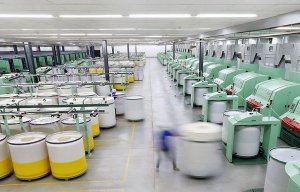
Rieter orders in 2024 suggest market upturn
China, Japan and South Korea will have a strong presence at the composites show in Paris.

6th March 2023
Innovation in Textiles
|
Paris
Ahead of the JEC World composites exhibition which takes place in Paris from April 25-27, the JEC Group presented an overview of this $145 billion market on March 2nd.
JEC World will showcase some 1,200 exhibitors from 112 countries and attendees from Asia are back in a big way this year, with both China and Japan having national pavilions and South Korea also strongly represented. The event anticipated more than 35,000 visitors.
Composites continue to offer benefits over traditional materials such as steel, aluminium, wood and concrete due to their unrivalled lightness and exceptional strength-to-weight ratio, as well as their resistance to corrosion, chemicals, impact vibration and UV rays.
In addition, they can provide fire resistance and thermal insulation, as well as non-magnetic, electrostatic and electromagnetic properties. On-site and on demand production maintenance and repair are other advantages.
They are increasingly being adopted in markets such as energy – in oil and gas, wind turbines and solar, tidal and geothermal assemblies – as well as in electrical and electronics devices and appliances, as well as in applications in telecommunications and utilities.
Other major markets remain in transportation, aerospace, marine, consumer goods, construction and infrastructure and medical instruments.
“Composites have an essential role to play in decarbonising the economy,” said Eric Pierre Jean, president of the JEC Group.
Some 12.7 million tons of composites were produced in 2022 and by fibre type, 11.9 million tons were based on glass fibres and just 76,200 tons carbon fibre, with the remainder consisting of natural fibres and aramids.
By value, however carbon fibre represented 19% of the total, and glass fibres 76% and the use of carbon fibres has doubled since 2010
The market for the raw materials – primarily fibres and resins supplied as prepregs, pellets and fabrics – was put at $41 billion in 2022 and that for finished composite parts was $105 billion.
Carbon’s higher share of market value compared to volume is largely driven by the aerospace market and it represents 16% of the overall market by value and less than 3% by volume.

Business intelligence for the fibre, textiles and apparel industries: technologies, innovations, markets, investments, trade policy, sourcing, strategy...
Find out more